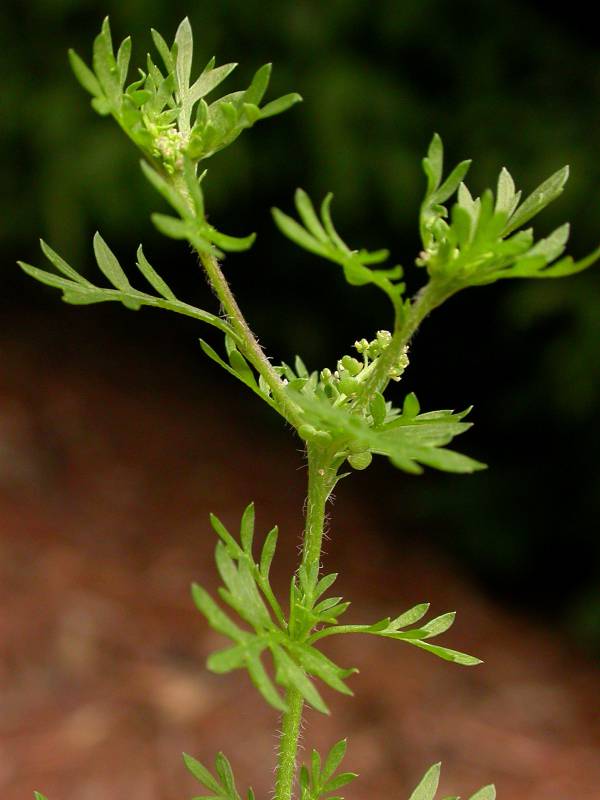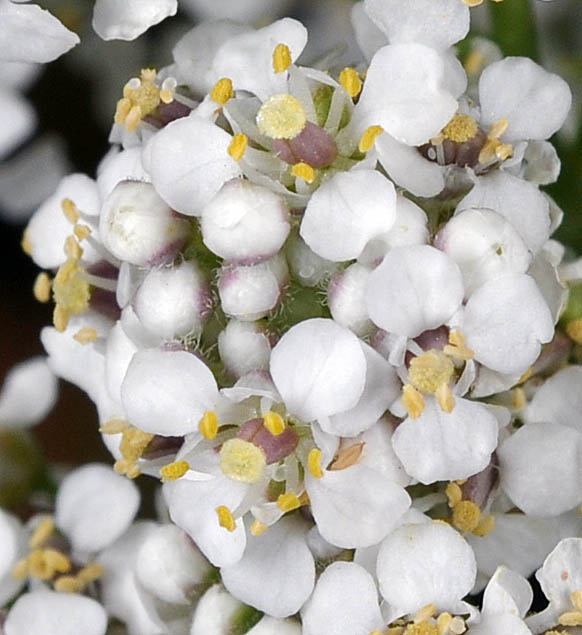Lepidium didymum
Lepidium latifolium
lesser swinecress, lesser wartcress
dittander, broad-leaved peppergrass, broad-leaved pepperwort
Leaves alternate, numerous, ovate-oblong, 1.5-3 cm. long, pinnatifid, the segments narrow, entire to pinnatifid.
Leaves alternate, entire to dentate, the basal with blades up to 30 cm. long and 6-8 cm. broad, with petioles sometimes as long;
cauline leaves reduced, becoming sub-sessile and entire.
Inflorescence of many-flowered, crowded, axillary, bractless racemes 1-4 cm. long; pedicles slender, 1.5-2.5 mm. long;
sepals 4, spreading, 0.5 mm. long, deciduous;
petals 4, white, linear, minute;
stamens 2.
Inflorescence of numerous, bractless, much-compounded racemes; pedicles terete, much longer than the fruits;
sepals 4, early-deciduous;
petals 4, white, 1.5 mm. long;
stamens 6;
style almost lacking.
Silicles strongly wrinkled, 2 mm. broad and 1.5 mm. long, cordate and notched, inflated and slightly obcompressed.
Silicles ovate-rotund, 2 mm. long, strongly obcompressed, with a few soft hairs, not at all notched, tipped by the stigma.
Lepidium didymum
Lepidium latifolium
- Local floras:
BC,
CA,
OR,
WA
- Local Web sites:
CalFlora,
CalPhotos,
Flora NW,
PNW Herbaria
WildflowerSearch
iNaturalist (observations)
USDA Plants Database
- LBJ Wildflower Center
- SEINet
- Plants of the World Online
- Encyclopedia of Life
- Wikipedia
- Google Image Search
- Local floras:
BC,
CA,
OR,
WA
- Local Web sites:
CalFlora,
CalPhotos,
Flora NW,
PNW Herbaria
WildflowerSearch
iNaturalist (observations)
USDA Plants Database
- LBJ Wildflower Center
- SEINet
- Plants of the World Online
- Encyclopedia of Life
- Wikipedia
- Google Image Search



